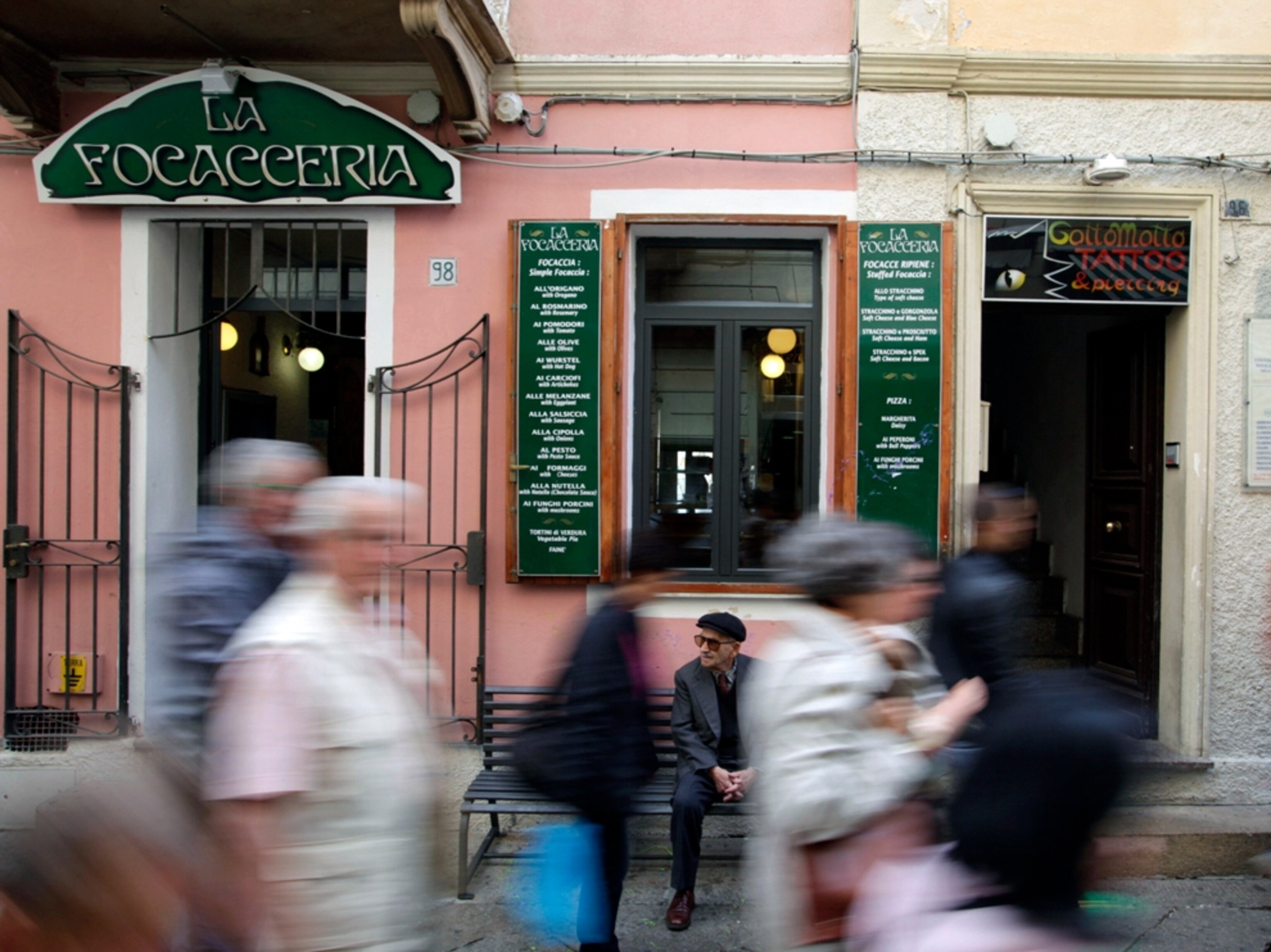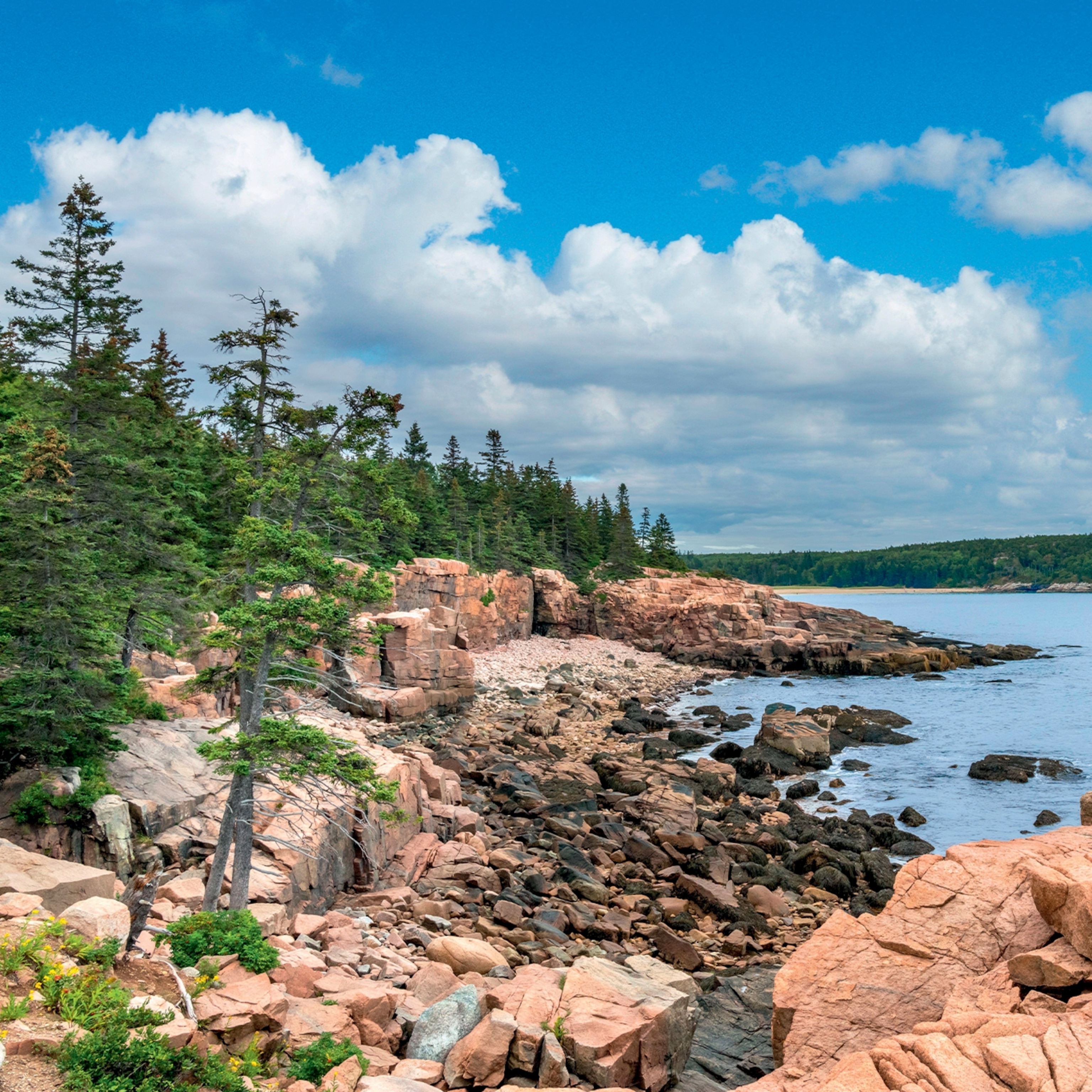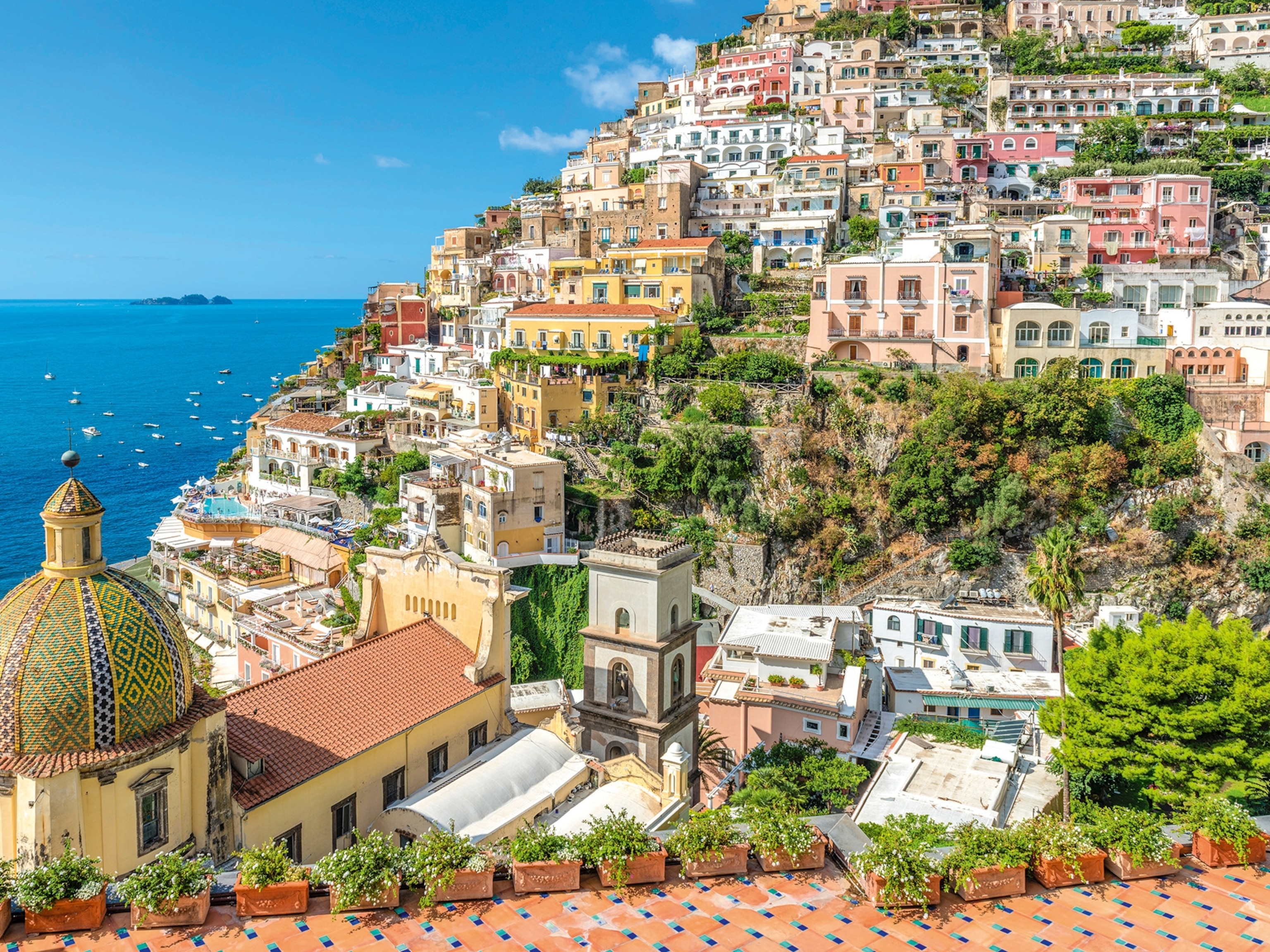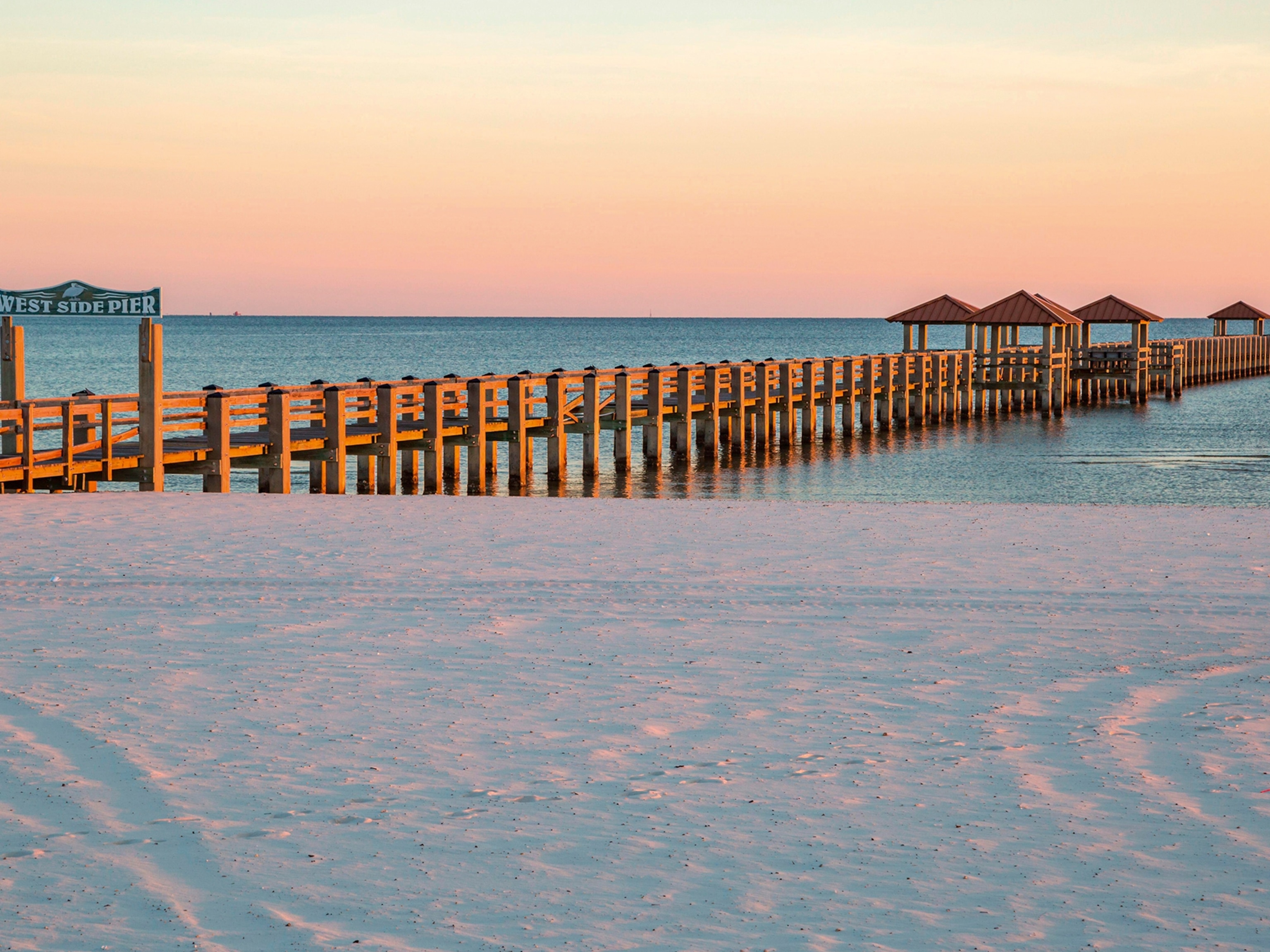
Sardinia's Carefree Coast
A lipstick red motorcycle propels our writer around Sardinia’s serpentine north coast—and into stony strongholds of the ancient Sards.
From the September 2009 issue of National Geographic Traveler
A lipstick red motorcycle propels our writer around Sardinia’s serpentine north coast—and into stony strongholds of the ancient Sards.
"You must make me a promise," says Irene Martini, a longtime summer visitor to Sardinia. We're sitting by the harbor of Porto Cervo, where million-dollar yachts are parked six deep. "Promise that you won't be seduced by the charms of Porto Cervo and the Costa Smeralda." Martini was concerned that I would be so dazzled by the coast's stylish hotels and multistarred restaurants that I would miss other aspects of this, Italy's second largest island, after Sicily.
Sardinia's "Emerald Coast," a storied land rimming the island's northern tip and including Porto Cervo, is heralded as much for its celebrity vacationers as for its beauty. I had found my way here on a multiday drive that I had been wanting to undertake for some years.
Italy is not short of great drives—think the Amalfi Coast, the back roads of Umbria, the dramatic Dolomites. But the coast of Gallura, Sardinia's northernmost region, has to be one of the most ravishing. Every bend of the road offers another expansive panorama of azure seas, of stark granite headlands, of beaches framed by fragrant juniper and oleander and myrtle. Still little known by most Americans, it is a corner of the Mediterranean adored by Italians and in-the-know Europeans.
My drive, along the wiggly northern coast and across the island's rugged spine, would take me five days. This being Italy, I felt I needed to put on a bit of style, so I had rented a red Ducati ST3, the Naomi Campbell of the motorcycle world, sleek and glamorous. Ducatis are iconic bikes, as much a part of Italian identity as pasta or flirting, managing to capture on two wheels central elements of the national character: beauty, charm—and unreliability. The Sardinian coast was just the kind of place for my ST3 to strut its considerable stuff.
The island of Sardinia lies roughly equidistant from the Italian mainland and the Tunisian coast. In his classic travel book Sea and Sardinia, D.H. Lawrence described it as "lost between Europe and Africa, and belonging to nowhere." This sentiment was echoed by fortysomething Martini, who has been coming to Sardinia from Rome since she was a child. "It feels like a place apart," she said. "We always came on the ferry, and to us kids it was like arriving in a whole new land."
Her earliest memory was the sea surging against the rocks below the porch of her family's holiday villa. Now she brings her own children. "Sardinia is so much more than its glamorous coasts," she says. "They are beautiful, of course. But Sardinia, the Sardinia we knew as children, is now somewhere else. Only a few miles inland from these yachts and boutiques and smart hotels are shepherds tending sheep in the mountains. Promise me you will visit that Sardinia as well."
Sardinia is blessed with great bone structure. This is not a land of supine meadows and soft rolling hills, of neat vineyards and well-plowed fields. Millions of years ago great layers of granite were forced up to the surface, and the island's skeleton was made visible. Rock remains the essential ingredient of Sardinia, and everything else—sand, sea, vegetation, man—must conform to its outlines.
Before me loomed Cape Figari, its rock brow furrowed with crevices. It would prompt the first of a thousand stops along this eye-candy route of indented coves and stony outcrops. Below me spread the wide sweep of the Gulf of Olbia, enclosed by a convoluted arc of boulder-framed promontories and inlets, whose waters shaded to brilliant turquoise. Out to sea rose the gaunt flanks of Isola Tavolara, an island where storm petrels and albatrosses circled the bony headlands.
I was now only 20 minutes out of Olbia, where the ferries from Italy's mainland arrive, but already the views were monopolizing my attention: the way the light polished the surface of the sea, a hidden beach—half in shadow, half in sun—glimpsed in a tiny cove, a distant sailboat.
Two hundred yards farther along I paused again for a whole new vista. The dense, aromatic Mediterranean scrub known here as macchia sprouted amid peach-colored boulders arrayed on slopes plunging to the halfmoon Gulf of Marinella; to my left reared the mountains of the interior, spiny-backed and forbidding. Breathing in the macchia's fragrance, I released the clutch, and the Ducati and I leaned into a series of delicious curves as we dropped down to the Costa Smeralda.
Running roughly 35 miles along the northeastern shores of Sardinia, the Costa Smeralda boasts one of the most pristine stretches of shoreline in the Mediterranean, and one of the most exclusive. Every summer it attracts yachtfuls of film stars and models, playboys and princes, Arab sheikhs and Russian oligarchs. The paparazzi flock here to capture the likes of Pierce Brosnan, Julia Roberts, and Donatella Versace.
Costa Smeralda was the creation of jet-setting Prince Karim Aga Khan IV, the spiritual leader of Isma'ili Muslims. He stumbled upon the charms of this empty coast in 1958 when his yacht sheltered from a storm in one of its inlets. Within four years he had formed a consortium to buy more than 12,000 acres of coastal property to create a resort destination of villas, marinas, and luxury hotels.
It may sound like a great way to ruin a virgin coastline, but long before such things were fashionable, Costa Smeralda was a model of sustainable tourist development. Strict controls governed everything from building design (traditional materials only) to electricity cables (buried underground). This wasn't all far-sighted eco-consciousness, however; it was also simple self-interest. The rich partners in the consortium planned to holiday here themselves, and they wanted to keep it pretty much as they found it—a wild shore of pink and gray granite, of thorny prickly pear and juniper, of hidden coves with pocket beaches. A land magnificently apart.
Accompanied by the Ducati's throaty growl, I followed the winding road past red-roofed villas tucked discreetly behind banks of blooming bougainvillea. Beyond the world-famous Pevero Golf Club, I took the turnoff for the Costa Smeralda's unofficial capital, Porto Cervo. A re-creation of a Mediterranean village, this upscale port village is all cobbled lanes, picturesque archways, and elegant loggias—without a lot of locals. In place of fishing boats the harbor floats yachts the size of small cruise liners. Instead of butchers, bakers, and candlestick makers, the cute lanes are crowded with Versace, Prada, Gucci, and Bulgari. It's a shopping mall for millionaires: Park your boat and unpack your credit rating.
I treated myself to a lazy afternoon on the sands of the nearby resort village of Liscia di Vacca, watching white sails drift toward the Maddalena Archipelago. The evening was spent at arcaded Ristorante Fior d'Acqua, overlooking the harbor at Porto Cervo, where Italian celebrity chef Michele Farru has tried to bring a modest authenticity to the over-inflated culinary expectations of this bejeweled coast. I dined on a sea bass that capped off a sublime first day.
A friend once commented that the minute we step into an automobile we lose the touch of a landscape. On the Ducati I felt, I smelled, I tasted Sardinia. I ascended and glided down the island's smooth contours, I leaned round its inlets and bays, feeling the wind blowing off the sea coursing down from the mountains. I inhaled the freshness of the mornings and breathed the drowsy heaviness of the early evenings. The "touch" of the landscape lay in subtle details. On the road north from coastal Cannigione, winding through macchia scrub, I passed through invisible chambers of scent, one moment rosemary, then myrtle, lavender, thyme, and then, round a corner, the sudden salt tang of the sea.
On the heights of Capo d'Orso, or Cape of the Bear, where the morning was perfumed with oleander blossom, I met an English writer musing on antiquity. The Mistral wind was blowing down from Corsica, whose blue mountains loomed across the white-capped sea.
"Does that look like a bear to you?" Anthony Sattin asked. "I can't see it."
He pointed at an outcrop of otherworldly weather-carved rocks that allegedly resemble a bear and have been a navigational reference in these waters for millennia.
"Perhaps Ulysses had a superior imagination," Sattin said, struggling to unfold a map in the brisk wind. Before us spread the coast of north Sardinia and the Maddalena Archipelago, a complex interplay of turquoise sea and earthen islands, of water and rock and incandescent light.
"I love this sea," Sattin said. "I feel I'm looking at the dawn of Western civilization."
I pressed on along the north shore through the sleepy town of Palau to Santa Teresa Gallura, a relative newcomer as Italian towns go—it was founded in 1808—but with beaches that have become popular in recent years as an alternative to the pricey Costa Smeralda. The Ducati and I climbed the long, straight road to the town's main piazza and rounded a corner to find the Caffé Mediterraneo. The waitress who took my order for an espresso wasn't, she said, really a waitress. She was a sailor, crewing on yachts through the summer months. "There are plenty of yachts in Sardinia, but they're not always owned by sailors."
The winds of Sardinia are famous, cooling through the hot summer months, bitter in winter, and unpredictable year-round. Santa Teresa overlooks the Bocche di Bonifacio, the "mouths," or strait, of Boniface, which lies between Corsica and Sardinia. Barely seven miles wide at its narrowest point, littered with islands and rocks, the strait is a funnel for wayward winds, a threat to all but the most experienced sailors. Still, one sailor's danger is another's opportunity. Each summer, the strait is the venue for popular sailing races, including several sponsored championships. "With the Ponente wind blowing at your back, or the Libeccio coming across your starboard stern," the waitress said, "these offer some of the most exciting runs in a sailor's life."
Heading south along Sardinia's west coast, the road, the landscape, and my Ducati opened up as I hit sixth gear. Before me a succession of macchia-cloaked headlands cradled bays of unnatural blue and beaches backed by low dunes and tall umbrella pines. Stylish holiday villas, usually set within gated communities, lay scattered along this coast, now branded Costa Paradiso in response to the more famous Costa Smeralda. The ruins of watchtowers, where ancient Sards once scanned the horizons for the ships of Saracens and pirates, commanded the promontories.
Ahead of me emerged the silhouette of the fortified hilltown of Castelsardo, one of Sardinia's defensive strongholds. I wound the Ducati up the twisting road to the town's 12th-century ramparts. Established by the powerful Doria family of Genoa, Castelsardo is a medieval town of chutes and ladders. Stairways just wide enough for two donkeys to pass snake round a corner, climb between houses leaning toward each other, and tumble down narrow lanes into a piazza or a castle keep. The citadel itself broods somewhere at the center of this geranium-strewn labyrinth while the cathedral hangs above the sea like an elaborate balcony, its faithful campanile—bell tower—standing to one side like the lighthouse it used to be.
Castelsardo was home to one of the island's famous figures, Eleanor of Arborea—Sardinia's own Joan of Arc. In the absence of any male heirs, she became regent after the assassination of her brother in 1383. Her popularity, still evident today, was based on her defiance of the island's Aragonese overlords and on her remarkable legal code, which was published in the Sardinian language in 1395 and established a whole range of citizens' rights. Among the revolutionary concepts in this Carta de Logu was the right of women to refuse marriage and to own property. In terms of civil liberties, the code made provincial 14th-century Sardinia one of the most developed societies in all of Europe.
From Castelsardo I followed route SS134 inland through the hilltowns of Sedini and Bulzi. I had a promise to keep.
The notion that Sardinia's character is to be found in the mountains of the interior is not merely a reaction to the recent development of tourism along the coasts. Like many islanders, Sardinians fear the sea; it was the place from which threats arrived. So most people lived inland, as farmers and shepherds in the safety of the mountains. To find old Sardinia, this is where one must look.
Under a late afternoon sun I followed the winding road into the embrace of the mountains. The landscape here was what granite had made it—unruly, rumpled, rugged. Streams plunged into sudden gorges. Crops struggled for a foothold among the boulders. Scattered Sardinian farmhouses turned blank faces to the road. Mountain peaks reared into shapes that pagan societies would have worshipped—the kind of terrain that would give heart failure to a Kansas farmer, or, for that matter, a Tuscan one. Groves of twisted cork oak trees leant a Lord of the Rings appeal. There was none of the neat harmony of central Italy, with its linear vineyards, pruned olive orchards, and rows of cypress trees.
Turning onto route SS127 east of the town of Laerru, I approached Tempio Pausania, the old mountain capital of the kingdom of Gallura, in time for the evening passeggiata, or promenade. I left the Ducati to smolder on a side street and took a seat on the terrace of the Museum Ristorante Bar to watch the evening scene as the good citizens strolled arm in arm by the granite cathedral and along Piazza Gallura, smiling and nodding at their neighbors, pausing for a chat or an aperitivo. They could not have been more different from the fashionable crowds in Porto Cervo. An elderly widow in black leaned on the arm of a granddaughter. Two gentlemen paused, their coats draped over their shoulders like extras in The Godfather. Over by the bar, a pair of spotty youths were trying to entice girls onto the backs of their scooters with little success.
I fell into conversation with the man at the next table, Signor Lerro, who was sporting a three-piece suit and a trilby hat, and sipping one of those brightly colored drinks Italians love.
"Shepherds or monks," Signor Lerro said to me, dabbing at his mustache with a napkin. "Everyone in Sardinia—I mean the real Sards, of the interior—is related to a shepherd or a monk. For centuries those were the career choices."
"And you?" I asked. "A shepherd or a monk?"
"My great-grandfather was a monk," he said, shrugging. "Like so many Italian monks, he wasn't a very good one."
The next day I took the road south, to Monte Limbara, at 4,468 feet, the highest point in Gallura. The road corkscrewed up through pine woods. On the bike, I could feel the air cooling as I climbed. After a series of hairpin turns, the trees began to thin and the sky expanded.
Just short of the summit I came to a little church, Madonna della Neve, and a statue of the Madonna and Child. I left the bike and followed a path through trees. I could hear the wind sighing in the pines on the lower slopes, and a stream gurgling somewhere. I climbed on through a wilderness of juniper scrub and lichen-flecked boulders to the final ridge, where wisps of clouds curled up the side valleys like white smoke.
At the summit, the whole coast of northern Sardinia spread out below me, including the route of my drive. To the east pooled the Bay of Olbia, where a ferry was pushing toward its wharf. Round the northern shores I could make out Capo d'Orso on one side and Capo Testa, beyond Santa Teresa, on the other. To the west stood the outline of Castelsardo.
From here, Sardinia's coast looked even more extraordinary, albeit dotted with the benign evidence of tourism's invasion. But I was glad the coast hadn't seduced me entirely—that I had followed the roads winding into the tumult of Sardinia's rugged interior, to the old land of shepherds and monks, where the rough edges of traditional, authentic Sardinia still survive.
Intelligent Travel: Italy's Sardinia
Entry requirements U.S. citizens need a valid passport to enter Italy. Time Sardinia is six hours ahead of eastern standard time. Currency The euro; find exchange rates at www.oanda.com. Phone calls To telephone Sardinia from the U.S., dial 011, the country code 39, and the local number.
- National Geographic Expeditions
Ristorante Fior d'Acqua Piazza del Principe, Porto Cervo; 0789-907018; www.piazzadelprincipeportocervo.com/fiordacqua.asp.
Santa Teresa Gallura www.santateresagallura.com/index1.htm.
Caffé Mediterraneo Via Amsicora 7, Santa Teresa Gallura; 0789-759014.
Castelsardo www.comune.castelsardo.ss.it.
Tempio Pausania www.sardegna.com/code/articolo/TABLE/COMUNI/id/71/LINGUA/EN.
Ristorante Bar Museum di Ducceschi & Mandaresu 27 Piazza Gallura, Tempio Pausania; 079-4112154.
Monte Limbara www.monte limbara.com.
Bar Gelateria del Molo Via del Molo, Porto Rotondo; 0789-34338.
Pescheria Antonio Cimino 27 Via Torino, Tempio Pausania.
Atelier Anna Grindi 34 Via Roma, Tempio Pausania; 079-631864.
Tenuta Pilastru Località Pilastru, 3.1 miles northwest of Arzachena on the road to Bassacutena; 0789-82936; www.tenutapilastru.it.
Maddalena Archipelago Island group off the north coast; accessible by ferry from Palau. Attractions include pristine beaches (reachable by motorboat) and the scenic isle of Caprera,once home to 19th-century Italian patriot Giuseppe Garibaldi and now a national park. www.lamaddalena.com.
Museo Etnografico Olivia Carta Cannas Ethnographic museum with exhibits on Sardinian traditions, crafts, and more. 6 Via Monti di Lizu,Aggius; www.museomeoc.com.
Sardinia Tourism www.sardegnaturismo.it/en/index.html.
Author and Vespa owner Stanley Stewart divides his time between England and Rome. This is the first assignment for Milan-based photojournalist Dave Yoder.







